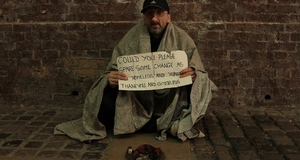Face Management Theory: Modern Conceptualizations and Future Directions
By
2015, Vol. 7 No. 04 | pg. 1/6 | »
IN THIS ARTICLE
KEYWORDS
The beginning of any social relationship is often ambiguous (Edelmann, 1985, p. 195). If a social interaction proves to be troublesome, conflict may occur. While conflict is an inevitable facet of life, it is not necessarily a negative phenomenon (Oetzel, Ting-Toomey, Yokochi, Masumoto, & Takai, 2000, p. 398). To ensure that any social interaction develops smoothly, it is important to examine how people negotiate meaning within the relationship. Thus, the sociological concept of "face" comes into play. Face is the positive social value that a person claims for themselves in the context of a social interaction (Cupach & Metts, 2008, p. 206; Oetzel et al., 2000, pp. 398-399; Dainton, 2010, p. 58). Since a conflict will often contradict a person's idealized face, the main question thus becomes how people negotiate faces with one another during a troublesome social interaction (Sharkey, 1992, p. 257). By their very nature, disagreements are often more complex than agreements because of the sheer number of social variables involved (Holtgarves, 1992, p. 148). Once the social variables are identified, they become the unwritten "rules" of a social interaction that, if broken, may cause a relationship to dissolve (Hodgins, Liebeskind, & Schwartz, 1996, p. 300). Likewise, the identification of these variables can help save face, regardless of whether the conflict was triggered purposely or inadvertently (Manusov, Kellas, & Trees, 2004, pp. 514-515). This paper is divided into three sections. The first section focuses on the underlying ontological assumptions of face management theories, including face, facework, politeness and face negotiation. Ontology is the study of being and is therefore critical to examining how face negotiation theory developed. Although the concept of face is as old as human existence, the identification of the concepts and variables describing face is relatively recent.The second section focuses on epistemological assumptions of the theory. Epistemology questions what knowledge is and how it can be acquired, as well as the extent to which knowledge pertinent to any given subject of entity can be acquired. In this section, prior research on face management theories will be analyzed. The research will be examined chronologically by topic, as opposed to a thematic organization. Since theories within face management build upon one another, it is important to differentiate between the concept and the theory to prevent confusion. Finally, the third section focuses on the axiological assumptions of face management theory. Axiology is the study of value and remains important because, without a way to show the theory's importance in the world, the theory would likely languish. As we will see, this theory has proven immensely useful to people all over the world. Yet, the theory is not without its disadvantages, which mainly stems from research gaps that need to be addressed. With this in mind, a framework can be developed to examine further research on the theory. Ontological Assumptions of Face Management TheorySymbolic Interactionism TheoryThe identification of the face concept can be traced to George Herbert Mead, who created the Symbolic Interactionism theory just prior to his death in 1931. Symbolic Interactionism posits that our daily routine of interactions are not spontaneous creations of our own making. Rather, they are "symbolic enactments" that reflect our knowledge of cultural rituals. With this knowledge, people can coordinate their behavior and create meaning amongst one another (Cupach & Metts, 2008, p. 204). This proved to be one of the main tenets of face negotiation theory because people are raised in cultures and use that upbringing to socialize with other people. Social Exchange Theory (SET)In 1958, George Homans created the Social Exchange theory, which posits that people are self-interested entities who attempt to maximize their own social profits. When interacting with other people, a person can attempt to shape others' behaviors to their own liking by offering or withholding certain social rewards (Sharkey, 1992, pp. 258-259). Social exchange theory's main assumption consists of the minimax principle, which posits that personal relationships are a function of comparing benefits to costs and to attaining the former. A secondary assumption is that human beings are selfish by their very nature (Dainton, 2010, p. 63). SET implicitly acknowledged the concept of face because face theories recognize that everyone is interested in maintaining and protecting face. Social exchange theory breaks down this cost-benefit ratio matrix through its three core components. First, the outcome of a relationship is the result of whether those costs were worth the benefits. In face theories, the outcome is the motivation to maintain a particular face in the first place. Second, the comparison level represents what rewards a person expects to receive in a particular relationship. The outcome and comparison levels act together to determine whether the face was effective or not. Third, the comparison level of alternatives recognizes that the act of just determining one's satisfaction (or dissatisfaction) with a relationship is still not enough to predict whether the relationship will continue or end (Dainton, 2010, pp. 63-65). The comparison level of alternative is a broad, "catch all" term that recognizes that there are other influential variables. While this decreases the simplicity of the theory, it also acts as a way to encourage future research on the subject of SET. In the end, SET recognizes that people want to ensure that all their social interactions proceed smoothly for favorable social relationships. Goffman's Research on Face and Facework StrategiesPerhaps the most influential researcher who defined the concept of face was Erving Goffman. Face, according to Goffman (1956), is ‘‘the positive social value a person effectively claims for himself by the line others assume he has taken during a particular contact" (p. 268). Goffman believed that all people have a face and it was their goal to put forth the most positive images of themselves in public (Cupach & Metts, 2008, p. 203-206). He also recognized the verbal and non-verbal functions of face in interpersonal interactions. Goffman believed that people would perform a set of verbal and non-verbal acts to show their understanding of both the situation and the people within the situation (Bylund, Peterson & Cameron, 2012, p. 264). This expanded upon SET's comparison level of alternative because Goffman labeled these "catch all" variables as socially-negotiated between the people and the situation.
When the loss of face cannot be avoided, Goffman (1967) used the term "ritual disequilibrium" to describe the phenomenon (p. 19). During this time, there are four sequences of events. First, there could be a spoken or implied challenge to call attention to the misconduct. Second, there could be an offering to show other people that the offending person acknowledges their behavior violated expectations for maintaining the face of themselves or others. Two examples of this could include a direct apology or downplaying the severity of the offense. Third, there could be an acceptance of the offering as sufficient to restore face. Fourth, there could be a thanks from the offending person for the other people that accepted his or her poor performance. One pass-through of this four-part sequence is often sufficient to resolve a face- threatening act, but at other times, multiple passes may be required (Cupach & Metts, 2008, p. 208). Facework recognizes that no single strategy is appropriate for all events (Cupach & Metts, 2008, p. 210). This is important because this allows the facework to be integrated into virtually every face-threatening situation imaginable. For example, using humor at a funeral to save face may not be the best strategy when the overwhelming emotion is somberness. Even then, facework is not without its critics. Cavanagh, Dobash, Dobash & Lewis (2001) have argued in their research on domestic partner violence that facework can twist logic by turning a morally-reprehensible situation into something morally-acceptable (p. 700). Goffman first defined threats to face in 1956 he researched embarrassment, one of the most common face threats. Embarrassment proved to be fertile ground for research, as it is common, relatively harmless and will usually integrate disruptions to face and facework strategies. Goffman suggested that embarrassment is the result of a disrupted interaction in which a person fails to maintain their desirable social identity (Miller, 1987, p. 1061). Goffman identified two types of stigmas: (1) discreditable stigmas, which are not obvious or immediately recognizable and (2) the discredited stigma, which is immediately recognizable (Brackett, 2000, p. 349). Goffman (1967) further defined expressive order to describe the idea that people generally support each other's face presentation (p. 22). This idea is not entirely surprising, since we cannot expect other people to cooperate in the protection of our own faces if we are not willing to do the same for them (Cross & Stone, 1964, p. 3; Cupach & Metts, 2008, p. 206; Holtgarves, 1992, p. 142). Likewise, an individual could never expect to gain a public reputation without the public taking a chance on them. Goffman (1963) himself believed that the notion of people managing their responses, as well as the responses of others, implied a conscious awareness of something in need of face management (p. 118). Therefore, it is a reasonable assumption for people to develop the strategies to achieve management (Cavanagh, Dobash, Dobash & Lewis, 2001, p.700). Embarrassment occurs when a person or group fails to put on the appropriate face for an audience. There are two types of embarrassment: (1) Primary embarrassment is the immediate response to an embarrassing event while (2) secondary embarrassment is the response to one's overt embarrassment (Edelmann, 1985, p. 205). Embarrassment is a contagious phenomenon and people, especially in large group coordination, would want to avoid a "domino effect" of embarrassment if at all possible (Cross & Stone, 1964, p. 2; Silver, Sabini & Parrott, 1987, p. 57). This stems from two important research studies. First, Miller (1987) found that two causal mechanisms in the expressive order are empathy and sympathy (pp. 1061-1063). Second, Sharkey's (1992) found that most people are willing to follow social norms without thinking about it (p. 258). Cross & Stone (1964) believed that people, by their nature, are flexible and want to give most people the benefit of the doubt (pp. 12-13). It is important to note that Goffman (1967) did not consider embarrassment to necessarily be a bad phenomenon (pp. 10-11). Embarrassment itself is simply an acknowledgement that some standard(s) have not been met. The pressure associated with embarrassment suggests that a person would likely not want to experience the phenomenon again. When a person chalks the unfortunate event to experience, this can be the best teacher for an individual who prefers an experiential education. Expressive order adds to this by acknowledging that people are social creatures that want to help each other when in need. As such, future relationships can be built to ensure that embarrassment does not occur again. Thus, since facework involves the negotiation of a situation, a person's face is not necessarily innate (Holtgarves, 1992, p. 142; Oetzel, Ting-Toomey, Masumoto, Yokochi, 2001, p. 235). Goffman would likewise say that, because we use strategies to negotiate face, these strategies are learned as we grow up in normal social interactions (Cupach & Metts, 2008, p. 208). Goffman (1959) used the concept of drama in a theatrical performance to illustrate social interactions, writing that a person's performance "serves to influence in any way any of the participants" (p. 22). He believed that a person's performance was divided into two functional parts: (1) the front region consists of everything seen (setting, the props and the characters) and (2) the back region consists of everything unseen, including the rooms for performance preparation (Cupach & Metts, 2008, pp. 205-206). The back region is particularly important because a face-threatening act can occur if someone spots us "out-of-face" while we are preparing to put on our public face (Cupach & Metts, 2008, pp. 205-206). During a person's outward "in-face" performance, they will elicit two types of messages: (1) verbal messages, which are used "admittedly and solely to convey the information that he and the others are known to attach to these symbols" and (2) non-verbal messages, which "have little concern or control, being chiefly derived from the expressions he gives off" (Goffman, 1959, pp. 2-7). Since a person is more in control of their verbal messages, the audience will often pay attention to the person's non-verbal messages to discern the true meaning behind the message. While a theatrical performance may sound too artificial for daily life, it is not upon closer analysis (Brackett, 2000, pp. 348-349). Students, for example, get dressed, bring a notebook and a pencil to class. Thus, like a daily routine, one is not judged on the content of the routine but, rather, how well they play the part (Silver, Sabini & Parrott, 1987, pp. 47-48). Getting dressed appropriately, bringing books and taking notes not only "looks the part," but it is also a functionally-conducive to success in the classroom. In contrast to Brown & Levinson, Goffman had four tactics associated with accounts: denial, blame, minimization and reduced competence. Goffman's view of denial was that it often occurred at the beginning of a relationship and would cloud the issue at hand to make the issue seem completely-different. Denial is a broad-ranging strategy because it can also introduce the possibility for the offender to claim that they do not remember the incident (Cavanagh, Dobash, Dobash, & Lewis, 2001, pp. 700). Blame is similar to denial in the sense that the offender denies any claim to blame. However, unlike denial, the issue is more macroscopic in scope. The offender, for example, can blame a negative event on a larger issue, such as age or gender discrimination. Therefore, like denial, blame can cloud the issue and perhaps even "normalize" the issue (Cavanagh, Dobash, Dobash, & Lewis, 2001, p. 704). Blame also has a personal element in that the offender can blame their negative behavior on, for example, their violent early familial upbringing. Goffman viewed minimization as a way to reject terms like "instigator" or "antagonist" for the offending party. Offending parties could defend their actions, comparing it to more extremely-negative actions committed by other parties. Likewise, offending parties could defend their actions by, for example, claiming that their face-threatening act is a part of their identity or was acquired through their career training (Cavanagh, Dobash, Dobash, & Lewis, 2001, p. 706). Reduced competence blames the face-threatening act on a lack of awareness or a lack of training. Goffman (1971) detailed the issue when he wrote: "…there are pleas that claim reduced responsibility by virtue of reduced competence, the understanding being that although the actor is guilty of something it is guilt from being incompetent and not guilt for the specific deed" (p. 111). Research by Cavanagh, Dobash, Dobash, & Lewis (2001) found examples of reduced competence, including men drinking too much alcohol or men having anger issues.Continued on Next Page » Suggested Reading from Inquiries Journal
Inquiries Journal provides undergraduate and graduate students around the world a platform for the wide dissemination of academic work over a range of core disciplines. Representing the work of students from hundreds of institutions around the globe, Inquiries Journal's large database of academic articles is completely free. Learn more | Blog | Submit Latest in Business & Communications |


















